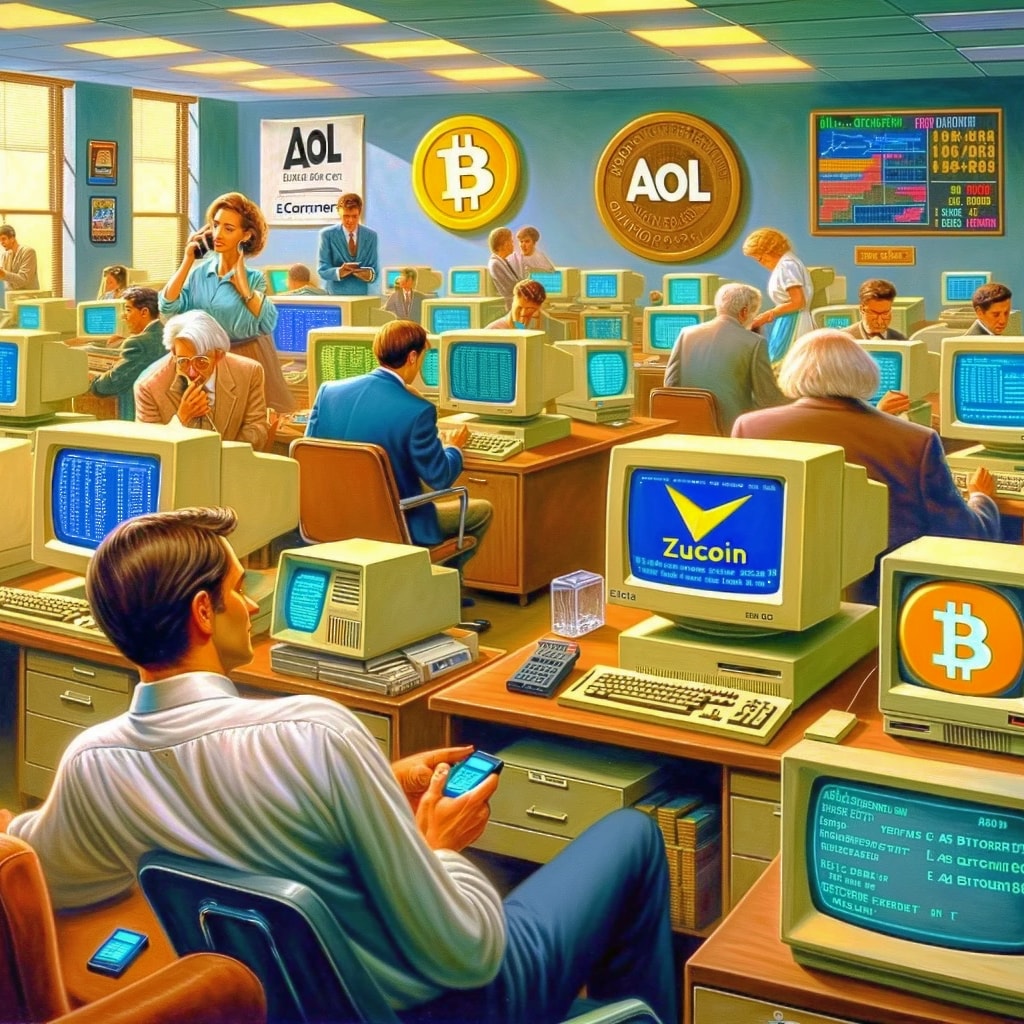Welcome, and thank you for being part of the MyZucoins community! Let’s get into an interesting piece of crypto, finance, or tech news to stay ahead.

State Of Crypto Tokenization: “Adoption Is Equivalent To Internet In 2000”
The fusion of cryptocurrencies with traditional assets marks a major growth phase.
Our analysis shows blockchains are evolving into the backbone for all asset classes.
The concept of tokenizing assets became viable with Bitcoin, then Ethereum.
Ethereum’s smart contract platform sparked a wave of diverse blockchain technologies.
Tokenization is rapidly growing, now trackable via real-time dashboards.
Tokenized assets on public blockchains are valued at $118.57 billion.
Ethereum leads with $69.16 billion, over 58% of all tokenized assets.
It boasts 6 million daily users, and nearly 6,000 monthly developers, and prioritizes security.
Tron and Solana follow, focusing on speed and scalability.
USD stablecoins, digital dollars, lead in tokenization, forming 10% of the crypto market.
Other assets, like U.S. treasuries, have grown over 450% amid high interest rates.
Yet, most tokenization solutions face accessibility issues due to regulations and low internet penetration.
Around 431 million people, 5.36% of the global population, use cryptocurrencies.
This adoption level mirrors the internet’s reach in 2000.
Countries with high internet and banking access lead in crypto ownership.
Of the 431 million crypto users, about 47 million own tokenized assets.
Tokenization could become a multi-trillion-dollar market by 2030.
Estimates suggest a market value between $3.5 trillion and $10 trillion by 2030.
This valuation spans various asset classes, including real estate, private equity, and public debt. Read more here.
Blockchain smart contracts 101: Transformative tools for the digital age.
Tokenization: A new dawn for insurance, agriculture, and real estate.
Tokenization 101: The future of ownership?
Commodity Tokenization: Putting commodities on crypto tokens could boost African nations.
Tokenizing the world is a $5T opportunity in 5 years.
How Can Zucoin Tackle The Enormous Tokenization Market?
“The future is already here — it’s just not very evenly distributed.” —William Gibson
Tokenization is quickly changing the world of assets, blurring the lines between digital assets and traditional asset classes.
Zucoin is charging forward in building out its solution to this growing demand, using the innovative Splitchain network to convert a wide array of assets into tokens.
Apart from obvious potential with the Zutopia platform as a digital asset marketplace, there are subtle details in the underpinning Splitchain network that stand out.
As the use of tokenization increases, Zucoin’s precision up to 32 decimal places allows for tiny transactions, creating a myriad of opportunities.
It reduces the need for a company to store precise measurements using their own separate systems, off-the-chain, due to limitations with most blockchain systems.
Being able to represent extremely tiny values directly on Splitchain solves this friction point.
Despite Ethereum’s current dominance in tokenized assets, the platform faces numerous issues and inconsistencies, especially with its fragmented and increasingly centralized scaling solutions collectively known as “layer 2s”.
Ethereum’s done a great job getting things this far, no doubt.
Zucoin aims to step up as an alternative, providing a new platform for tokenization through its Splitchain network.
Splitchain has an extremely different network scale incentive structure, that by default, has no transaction fees.
This is unheard of in the crypto infrastructure world and it requires a ground-up redesign of how crypto systems work.
It’s why Splitchain has taken years to build.
We’ll share more on this in future, so make sure you’ve subscribed to this newsletter to catch it early.
With the rate of crypto adoption mirroring the internet adoption rate of 2000, the report highlights how the crypto industry is still extremely young, despite all of the media hype and coverage.
Many problems still haven’t been solved by blockchains.
How many internet companies from 2000 still exist?
There’s only a handful of major ones—Google and Amazon for instance.
They grew by solving a number of difficult issues present on the web at the time, such as finding relevant information and buying online easily.
Tokenization, reported to be a multi-trillion-dollar opportunity by 2030, could find a driving force in Zucoin’s Splitchain network, given its unique in-built capabilities.
Similar to how the invention of the internet created countless previously unthinkable opportunities and businesses on top of it, the introduction of tokenization could revolutionize fundamental factors of the economy—assets, ownership and trust.
A revolution seems to be brewing.
If you liked this newsletter, please forward it to someone who might like it too.
You can also donate here or even buy some Zucoins. Every little bit helps us improve.
What did you think of this newsletter? Reply to send us feedback on what you liked or want to see featured more. There’s more coming, so stay tuned.
—
All the best,
—Rob
MyZucoins
Disclaimer: Of course, this is not advice, financial or otherwise. It’s also important to consider the risks and challenges associated with any potential benefits.